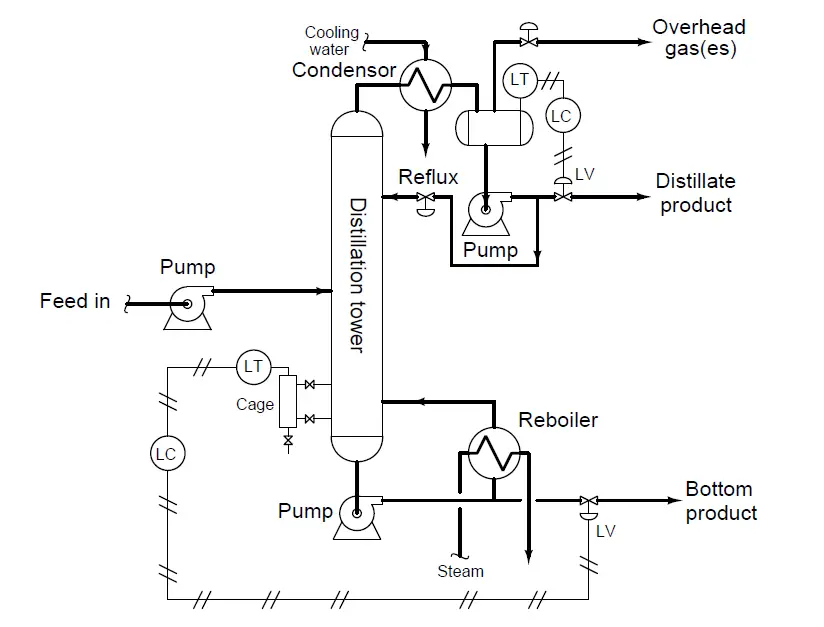Distillation is a process of continuous boiling and condensing used to separate mixtures of different fluids. A practical example of distillation is the separation of crude oil into multiple gases and liquids (propane, butane, naphtha, hexane, etc.). Components with higher boiling points (typically denser fluids) collect at the bottom of the tower, while components with lower boiling points (typically lighter fluids) and gases collect at the top of the tower.
In this distillation tower, the “feed” fluid is a mixture of just three components, each separated from each other within the distillation tower and draw off as products at three different points. “Overhead” gases are drawn off the very top of the tower, “distillate” liquid is drawn out of an accumulation vessel near the top, and “bottom product” is drawn off the bottom of the tower.
A displacer level transmitter (LT) senses the level of this “bottom product” liquid collecting at the tower’s base:

Note: In this example, the level instrument is a pneumatically operated device (old model).
An instrument technician calculates the buoyant force for the displacer of this level instrument to be 0 pounds at 0% liquid level, and 3.75 pounds at 100% liquid level.
Explain how you would check the calibration of this instrument while the distillation tower was running, using these figures.
Hint:
Don’t forget to contact the operator(s) for this process, and either have that operator put the level controller in manual mode, or you do it yourself!
The distillation tower bottom product level will have to be manually controlled for the duration of your calibration test.
More Questions:
Share your answers with us through below comments section.
Read Next:
Credits: Tony R. Kuphaldt
The conveyor sorting machine is widely used in the packing industries using the PLC program…
Learn the example of flip-flop PLC program for lamps application using the ladder logic to…
In this article, you will learn the STAR DELTA programming using PLC controller to start…
Lube oil consoles of rotary equipment packages in industrial process plants are usually equipped with…
Rotating equipment packages such as pumps, compressors, turbines need the lube oil consoles for their…
This article explains how to blink lights in ladder logic with a detailed explanation video…